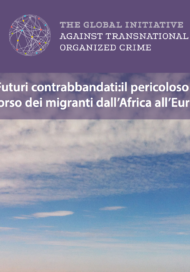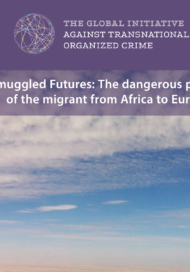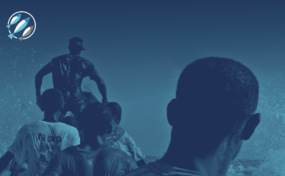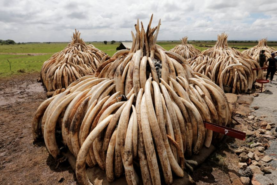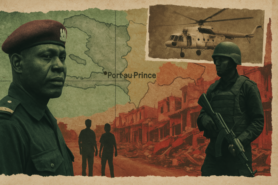Posted on 07 May 2014
In October 2013, Italy captured international headlines when a boat carrying hundreds of asylum seekers sunk off its coast, killing over 360 people. The incident reflects the tremendous increase in African migration to Europe in recent years, in part due to the Arab Spring. While Africans have been migrating to Europe for decades, the instability across North Africa and the Sahel, coupled with the erosion of Libya’s capacity to control its own borders, has resulted in an unprecedented surge of migrants to Italy in recent years. This surge shows no signs of subsiding.
It is estimated that in 80 percent of these cases, the journey is “facilitated” by migrant smugglers and criminal groups that who provides a range of services such as transportation, fraudulent identification, corruption of border officials and settlement services. Smugglers in transit countries coordinate with smugglers in source countries to act as guides, escorting individuals across the Sahara Desert, heading towards the coast. Although some smuggling networks are organized criminal structures, many are loosely linked chains of individuals, which make it challenging for authorities to dismantle.
“Smuggled futures: the dangerous path of a migrant from Africa to Europe (2014)” is the latest research report of the Global Initiative against Transnational Organized Crime explores motivations, methods and impacts of the increasingly potent and lucrative business of migrant smuggling from Africa to Europe.

Three main smuggling routes characterize the irregular migration to Italy and beyond. The first is the Western route, for which the main source countries are Mali, the Gambia and Senegal. The Western route often connects in the Sahel with the Central Route, for which the source countries are Nigeria, Ghana and Niger. Finally, there is the Eastern route, which sources from Somalia, Eritrea and Darfur in South Sudan, whose routes tend to cut north through Sudan and Egypt and then along the northern coast of Africa. All of these routes converge in the Maghreb, and in recent years most particularly in Libya, for the sea crossing to Italy.
The cost of a trip to Italy averages several thousands of dollars, depending on the distance and difficulty of the route, the level of institutional control over the route and on the transit and destination countries’ response to the migrants’ arrival. It may take years to complete, as many remain in transit hubs along their route to work to afford the next leg of their trip. As a result, many migrants are “stuck” in towns along the way to the coast. In addition to exorbitant prices, migrants endure perilous conditions. As they make their way to the Mediterranean coast, migrants are often travel in overcrowded trucks, facing starvation and thirst before even reaching the coast. Once they reach the Mediterranean, people are packed into boats set for Europe, often embarking without enough fuel to make it to Italy. All too often, migrants drown. If migrants do arrive in Italy, their reception is less than favourable. Many are sent back to Africa.
Migrants are extremely vulnerable to exploitation. Due to their weak economic power and desperation, smuggled migrants are particularly vulnerable to becoming victims of human trafficking. Even though smuggling and trafficking are two distinct crimes, it can be difficult to distinguish between an individual who is an abused smuggled migrant and a victim of trafficking. As such, it can be incredibly difficult to classify an individual as a “smuggled migrant” or “victim of human trafficking” as they may start their journey by voluntarily choosing to hire a smuggler, and ultimately becoming exploited and trafficked.
Given the exponential rise of irregular migrants and the humanitarian crises that accompany their failed attempts to reach European shores, EU states, including Italy, are under a growing pressure to restructure and align their immigration and asylum policies and practices. Current efforts to limit migration have only succeeded in shifting migration routes, forcing many seeking refuge to take more dangerous, riskier routes to Europe.
The report examines the implication of this growing phenomena for the international community, for regional policy, and as a humanitarian issue. It is clear that finding solutions to the problem of unmanaged migration cannot be limited to Italian border control but require regional cooperation in both Europe and Africa with governments addressing the root causes of mass migration.
